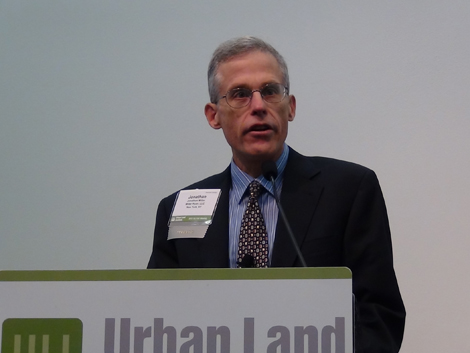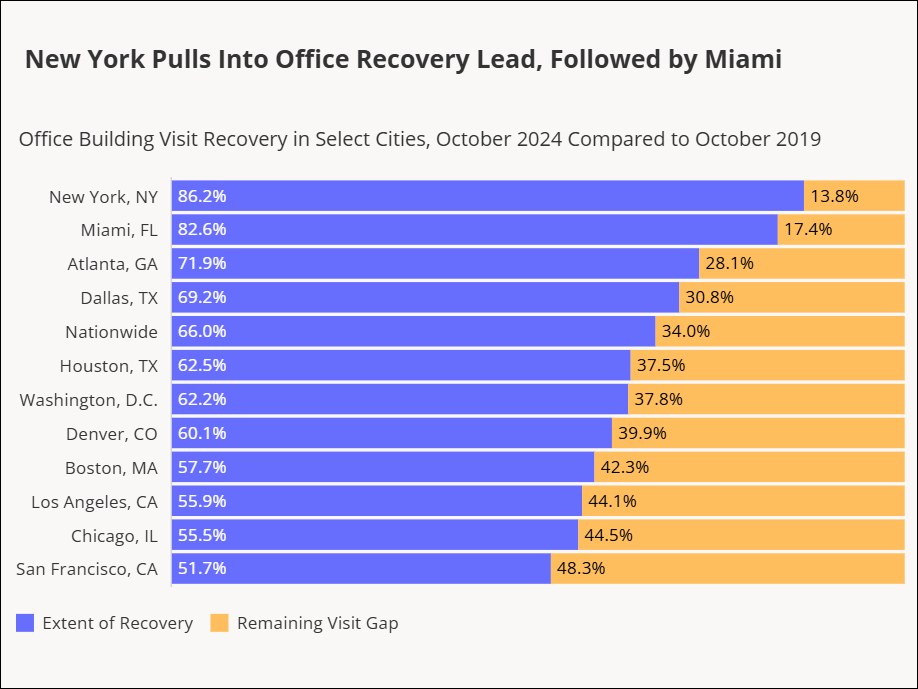ULI Special Report: Emerging Trends Respondents Optimistic About Recovery
Optimism permeated the Emerging Trends in Real Estate results this year, with respondents finding a marked improvement over last year. Researchers gave reporters a sneak peak Wednesday during the ULI Fall Meeting.
By Suzann D. Silverman, Editorial Director
Optimism permeated the Emerging Trends in Real Estate results this year, with respondents finding a marked improvement over last year. Recovery, though, remains slow, noted Jonathan Miller, partner & co-owner of Miller Ryan L.L.C. and the longtime author of the report, a venture between PricewaterhouseCoopers and the Urban Land Institute. Miller and fellow researchers presented the results during a media briefing yesterday during the ULI Fall Meeting.
“Recovery is definitely happening, and we’re profiting from it,” he declared, reflecting the sentiments of the more than 900 real estate investors, fund managers, developers, owners, lenders, brokers, advisors and consultants that participated in this year’s survey. And it is now occurring across the board: While multi-family has been the favored sector for investment for the past three years, he noted, the other sectors are now all attracting attention, as well. That said, in-depth interviews with 300 of the respondents revealed lingering uncertainty beneath the surface.
Among markets, the historical top cities remain in favor, although there was some surprising movement in how they ranked , based on investment, development and homebuilding prospects, according to Chuck DiRocco, director & head of real estate research at PwC, who is a co-author & production manager of the report. The biggest surprise was Washington, D.C.’s drop in favor, with the nation’s capital falling from the top spot down to No. 8 after three years leading the ranking. That shift in favor was revealed in a mid-year evaluation and has lingered into the more formal annual survey.
Last year’s second-place city, Austin, also dropped down, though it retained a respectable fourth-place listing, while formerly third-ranked San Francisco, continuing its return to strength, moved up to lead the ranking. Other top 10 cities included New York City, up to second place from fourth last year; San Jose, making waves with its move from seventh to third place; Houston, up from eighth to fifth; Boston, down only slightly, from fifth place to sixth; Seattle, now seventh (down from sixth last year); with Dallas-Fort Worth and Orange County, Calif., rounding out the list. Last year’s ninth and tenth place cities, Los Angeles and San Diego, dropped down to 16th and 15th place, respectively.
San Francisco made a particularly triumphant return because it won the “triple crown” of first place in investment, development and homebuilding, DiRocco noted. But performance among major cities across the country was promising, with the average market score at its highest since the early 2000s and an increase in the number of cities getting a green light for “generally good” performance while five fewer markets got a red light for “generally poor” performance than last year. Even the long-suffering Midwest is not as “red” as it once was, he said.
Another surprise was the rise in interest in secondary markets. “The major gateways have gotten too pricey for a lot of people,” Miller observed, as cap rates have continued to plunge. Investors in secondary markets, however, need to link up with a local operator to succeed, he warned, as they are in the best position to make money. “It’s a get-rich-slow (scenario), but you can make money,” he added.
Financiers also remain on the optimistic side, although they are not providing capital to everyone, according to Stephen Blank, senior fellow for finance at ULI and principal researcher & advisor for Emerging Trends. Equity providers across the board will capitalize the “usual suspects,” the well-heeled investors with solid reputations, but with others, “it’s a search for yield,” he said. The most confident investors include opportunity funds, REITs and foreign investors, while pension funds are taking a more cautious stance.
On the debt side, too, the most solid investors and properties will be able to obtain what they need, but for less-advantaged properties, financiers have no problem continuing to extend and pretend. They expressed confidence the CMBS market is returning sufficiently to cover the looming debt maturities.
Researchers’ top tips:
- Concentrate acquisitions in budding infill locations.
- Construct green office in 24-hour markets.
- Major hub distribution centers near ports and airports offer opportunity.
- Apartment development is leveling off.
- Single-family housing funds are worth pursuing, but with caution and only if they involve local operators.
- Pursue the big three “re’s”: Repurpose obsolete properties, refinance and renovate. Recapitalize well-leased assets and lock in low interest rates while you can.
- Hold core properties in 24-hour cities.
- Buy or hold public REITs and non-performing loans.










You must be logged in to post a comment.